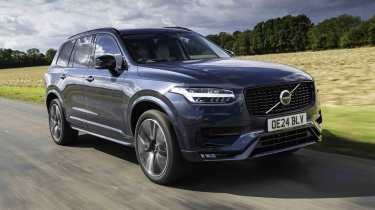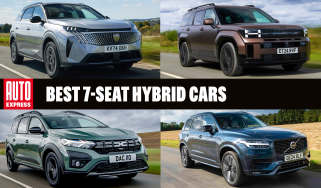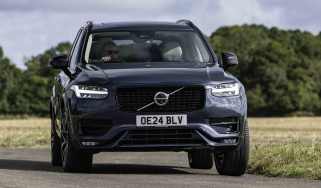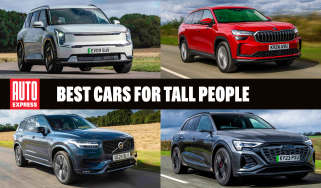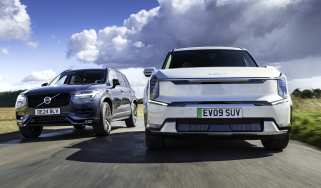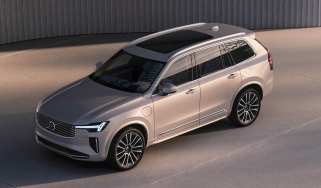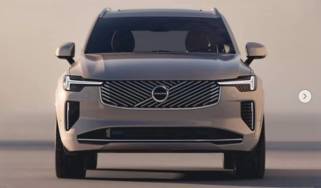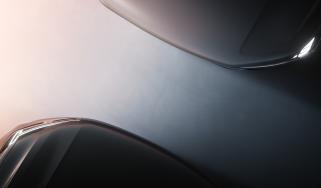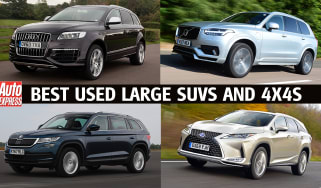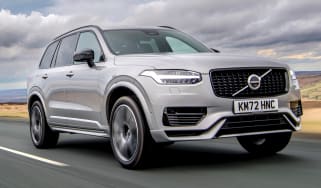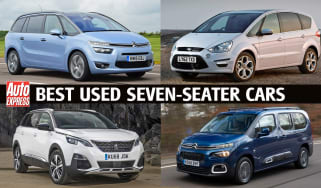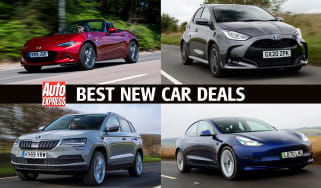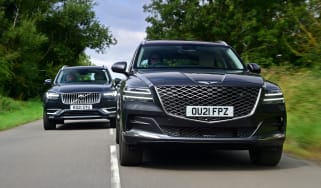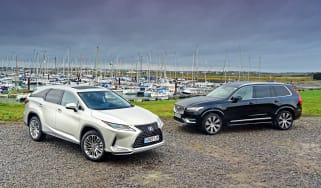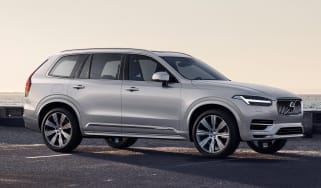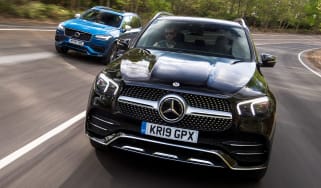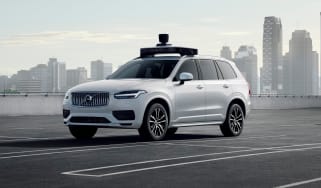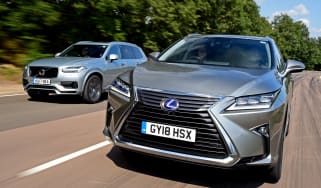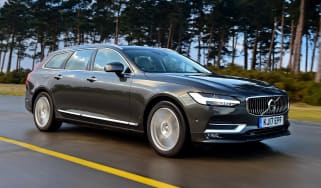Volvo XC90 review
Swedish Volvo XC90 SUV is still a strong contender after nine years on sale

Is the Volvo XC90 a good car?
The Volvo XC90 was a car that proved the Swedish company had the chops to not only take on the established German contenders, but beat them. The brand’s strengths of practicality and safety are perfectly in tune with a seven-seat SUV, which is why, even almost a decade after its release, the XC90 remains one of the most appealing cars of its type around.
These days, it doesn’t just have the Audi Q7 and Land Rover Discovery to compete with, though; all-electric alternatives such as the Kia EV9 match the XC90 on price, which is a significant factor when you consider that Volvo’s own electric seven-seater, the EX90, breaches £100,000 in its most lofty spec.
|
Key specs | |
|
Fuel type |
Petrol, PHEV |
|
Body style |
Large SUV |
|
Powertrain |
2.0-litre turbocharged petrol, four-wheel drive 2.0-litre turbocharged petrol PHEV, four-wheel drive |
|
Safety |
5-star Euro NCAP (2015 expired) |
|
Warranty |
3yrs/60,000 miles |
How much does the Volvo XC90 cost?
Prices for the Volvo XC90 start from around £62,000, while updates to the cabin, technology and powertrains have kept it at the top of its game. The most recent revisions added a new Google Android-based infotainment system, more sustainable interior materials and a bigger battery for the plug-in hybrid XC90 Recharge that boosted its electric driving range from 27 miles to 40. There’s an even bigger update coming to the XC90 at the end of 2024.
The all-new, electric Volvo EX90 arrives soon and will eventually serve as the XC90’s replacement, but the plug-in hybrid XC90 Recharge will remain on sale in the UK alongside the EX90 for some time, catering to customers who aren’t quite ready to make the switch to full electrification.
More reviews
With seven comfortable, adult-sized seats as standard plus a big boot, the XC90 is a strong candidate for family car buyers, but the quality on offer means it's more of a luxury choice than a family utility vehicle, and that’s reflected in the price.
The XC90 Recharge remains the flagship of the range, both in terms of fuel economy and price, powered by what Volvo calls the T8 Twin Engine powertrain with an electric motor used to drive the rear wheels. Volvo was one of the first big SUV makers to embrace ‘downsizing’ powertrains in pursuit of increased efficiency, and that is why all the XC90 models feature a 2.0-litre engine under the bonnet.
The XC90 Recharge uses a petrol engine and an electric motor, but the XC90 range also has two conventional petrol engines, badged B5 and B6, which use mild-hybrid tech to help boost efficiency without requiring you to plug in to recharge the batteries. There was a B5 diesel, although this has been dropped from the line-up.
Every version of the XC90 features permanent four-wheel drive and an eight-speed automatic gearbox with manual mode. Hill descent and hill start control are both fitted, although the Volvo is more suited to tarmac use than hardcore off-roading.
Volvo revised the trim structure for all its models, so the previous Momentum, R-Design and R-Design Pro lines have been replaced by Core, Plus and Ultimate specifications. You shouldn’t feel too short-changed opting for Core trim, because the standard kit includes 19-inch alloys, front and rear parking sensors, an automatic tailgate, a heated steering wheel, heated front and rear seats, a wireless smartphone charging pad and a nine-inch touchscreen with Apple CarPlay and Android Auto smartphone connectivity.
Plus trim adds larger 20-inch rims, a panoramic sunroof and a 360-degree parking camera set-up, while the Ultimate specification goes all out with air-suspension, a head-up display, Nappa leather upholstery, 21-inch alloy wheels and an exceptional 18-speaker Bowers & Wilkins sound system.
Engines, performance & drive
While diesel engines were part of the line-up until recently, the Volvo XC90 is now solely petrol powered. The mild-hybrid model offers the best all-round balance of performance and fuel economy, because you’re only going to reap the benefits of the T8 PHEV model if you’re able to plug it in to charge the battery on a regular basis. The latter does pack a punch, though, giving the XC90 a turn of speed that belies its relatively reserved exterior looks. Read more about the Volvo XC90's engine, performance and drive…
MPG, emissions & running costs
While the Volvo XC90 was offered with petrol, plug-in hybrid and diesel powertrains from launch, the diesel is no longer offered. That’s a shame because diesel still makes sense in large SUVs such as the XC90. The petrol model has mild-hybrid tech to boost efficiency, but claimed figures in the 33mpg range show it’s still not the most efficient way of powering a car of this size. The plug-in hybrid isn’t much better when the battery is flat, so it’s essential to keep the battery charged to maximise its effectiveness. Read more about the Volvo XC90's MPG, CO2 and running costs…
Interior, design & technology
The Volvo XC90 has been around for a relatively long time, so it doesn’t have the cutting-edge looks of newer rivals, but it’s still a handsome looking machine. That boxy shape means there’s good space inside, and all models feature seven seats as standard. There are premium materials throughout, with metal switchgear and plenty of physical switches – the XC90’s age means it’s not been subject to a touchscreen revamp just yet. Read more about the Volvo XC90's interior, design and technology…
Boot space, comfort & practicality
Every version of the Volvo XC90 comes with a seven-seat layout. The rearmost row is a little tight for adults, but not a total no-go area, and should be just about tolerable on shorter trips. The middle row is roomy, and the bench slides back and forth to boost access and legroom for the back seats. Those up front have plenty of space and a good view out. Boot space is excellent for the class, with a lot of newer rivals still struggling to match the XC90’s cargo capacity. Read more about the Volvo XC90's boot space, comfort and practicality…
Reliability & safety
Safety is one of the keystones of Volvo’s brand philosophy, so it’s no surprise that the XC90 excels at that brief. The car earned a five-star Euro NCAP rating when it was launched, but because it was tested in 2015 this score is no longer valid and can’t be compared with newer rival models. Of course, this doesn’t mean that the XC90 is no longer safe, and it features a lot of equipment that’s designed to prevent accidents and protect occupants should the worst happen. Read more about the Volvo XC90's reliability and safety…
Volvo XC90 alternatives
As a luxury SUV that sits at the top of Volvo’s range, the XC90 naturally rivals cars such as the Audi Q7, BMW X5, BMW X7, Lexus RX, Genesis GV80, Porsche Cayenne and Range Rover Sport. However, the XC90 comes with seven full-size seats as standard, so it also competes with the more family-friendly cars such as the Land Rover Defender, Land Rover Discovery, Kia Sorento and Hyundai Santa Fe. If you’re willing to go electric, then the Kia EV9 and Tesla Model X are also rivals, although the latter is only available with left-hand drive as a new car.
Used and nearly new
Spacious, comfortable and classy, it isn't hard to see why the Volvo XC90 was such a big hit when it was launched in 2002. The Scandinavian seven-seater had all the qualities to fit in with family life, and excelled on longer journeys where its spacious interior and superb refinement made for a relaxing drive.
Older examples are showing their age now, while running costs might be an issue for some. Second-generation models offer a touch of premium luxury and excellent standard safety kit but, as ever, be sure to do your homework on the history of your potential purchase - taking extra time to ensure your used buy is rock solid could help prevent spending out on repairs further down the line.
Volvo XC90 history
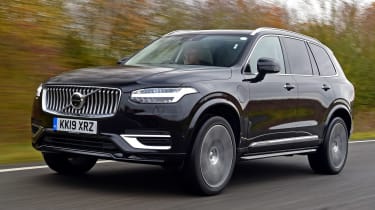
Volvo XC90 Mk2: 2014-date
Volvo did a great job with its second generation XC90, dialling up the luxury, refinement and safety credentials of its large SUV. Petrol, diesel and plug-in hybrid models are available, although you'll have to look out for a model from late 2015 onwards to secure a sporty R Design version - the Mk2 XC90 was initially launched with just Momentum and top-of-the-range Inscription trim levels.
There have been numerous manufacturer recalls for the latest XC90, so be sure to check all the necessary maintenance work has been carried out before any purchase. Read our full Mk2 Volvo XC90 buyer’s guide here…
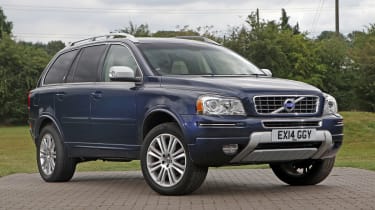
Volvo XC90 Mk1: 2002-2014
If you're after a big, comfortable, seven-seat SUV then the Mk1 XC90 is hard to beat. Admittedly, time has caught up with Volvo's family 4x4, but despite dated styling and reasonably high running costs, it still offers good practicality and will easily accommodate a large family and luggage.
Facelifted models were introduced in 2006 and 2012, adding improved cabin materials, new engines and a revised infotainment system. Read our full Mk1 Volvo XC90 buyer’s guide here…
Frequently Asked Questions
As with all Volvos, the XC90 is an extremely safe car, and analysis of official accident figures between 2004 and 2017 revealed that there had been no record of a driver or passenger fatality in one. The XC90 earned a five-star rating from Euro NCAP when it was tested in 2015, but the safety body constantly updates its test criteria, so its star ratings only remain valid for six years after a car is assessed. That doesn’t mean a car is no longer safe once the rating has lapsed, of course.
